Standing Water
- Home
- Standing Water
Daniel Dean has over 30 years experience providing lasting yard drainage solutions to include surface (or open) and subsurface pipe drainage systems.
The difference between surface and subsurface drainage
How much does it cost? To receive your free estimate, click Estimate My Job button:
Standing Water
Standing water ruins a healthy lawn and landscaped plant. Turf grass suffers from root rot, though moss never gets too much water. So poor lawn drainage will eventually grow more moss than grass. Most yard trees and shrubs are also damaged from water saturated soils, and will suffer from root rot and lack of oxygen.

- bacteria thrive in a moist environments
- it often ends up contaminated by human or animal waste
- it promoted ugly green scum
- if pets or small children drink even a tiny amount of this water, they can become very sick
- many insects, especially mosquitoes, breed in standing water, and mosquitoes carry Zika virus, West Nile virus, and some varieties of encephalitis.
- vermin, such as mice, rats, possums are attracted to watering holes, and they also carry disease and spread their waste
What Causes Standing Water?
Poor grading around home
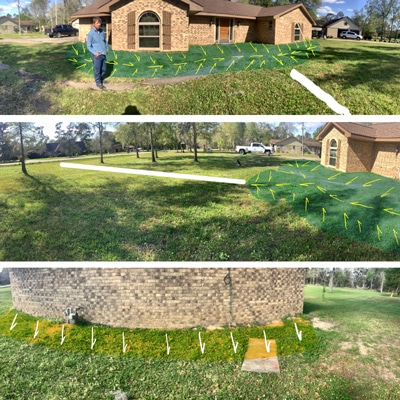
Grading a property to have a positive slope to push water away from the home is not necessarily a ‘do-it-yourself’ job unless you have the right equipment and experience. Manually, it can be quiet labor intensive. Often you will need to check for utility lines (underground cables) or piping before the and dirt is moved. Some areas require a digging permit before leveling your yard. The basic formula for calculating slope is rise over run. It’s possible to use a stake and string, and a carpenter’s leveler to calculate slope. Or, you can have Daniel Dean survey your property to determine the correct yard slope. Daniel Dean will removed the top 6 inches of topsoil, grade your yard to to the correct slope–taking into consideration of surrounding water shed and topography–and spread grass seed to keep the soil in place.
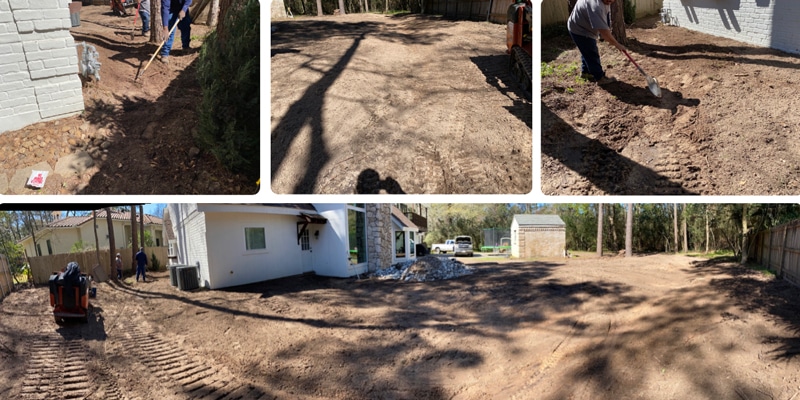
Bad subsoils
The types of subsoils on your lot can greatly affect the water conditions of the property. There are certain soils that are nearly impossible to dry out once they get wet.

Your soil type… a simple test
- Clay packs neatly and resist water and they drain very slowly
- Loam soil holds moisture and promotes plant growth
- ecological impacts, habitat destruction, terrestrial and/or aquatic biological losses
Hardpan

How much does it cost? To receive your free estimate, click Estimate My Job button:
Low spot in yard
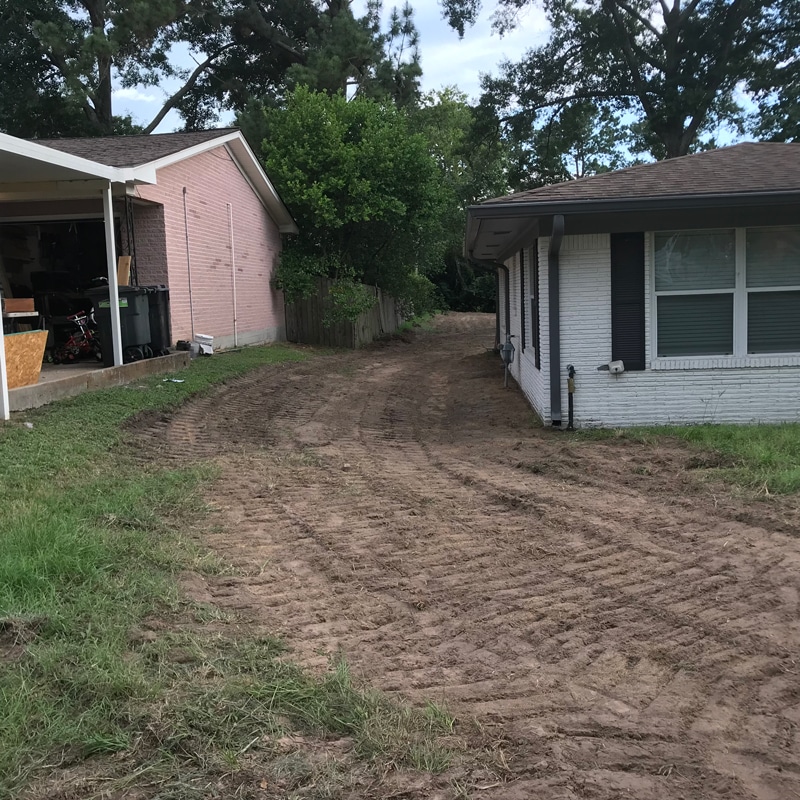
High water table

The pipes are laid on the gravel-lined underground channel, protected with filter cloth to keep sediment from clogging the pores; concrete pipe sections are placed with a gap between each that allows water in. The channel is sloped slightly to allow runoff to drain. In perforated pipes, the water releases slowly through the pores, and infiltrates into the ground, with excess water carried away to an acceptable discharge point.
Some homes with a high water table incorporate a built-in drainage system. Within the foundation is a system of perforated pipes parallel to the bottom of the house’s foundation and drain into an under ground pit (the sump). The switch turns on the sump pump when the water level in the sump pit rises and pumps the water out of the pit and into a pipe which ejects the drainage water.

Geotextile filter fabric prevents sediment from clogging underground drainage pipes.
Run-off water: paved surfaces and roof water management

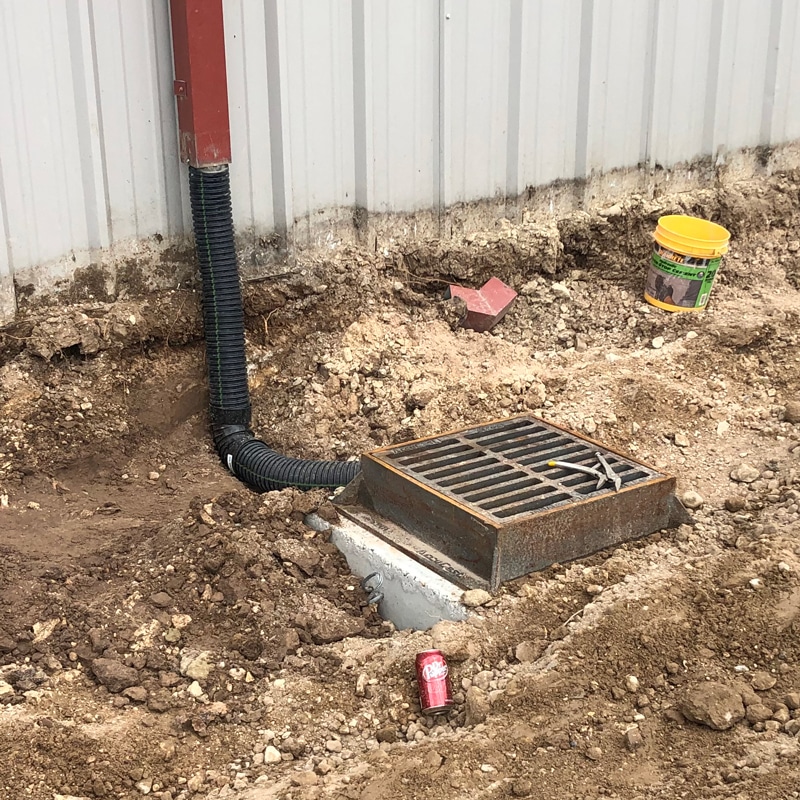
How much does it cost? To receive your free estimate, click Estimate My Job button:
How do I fix my drainage problem?
Drainage Solutions
Before a sensible, long-lasting solution can be developed, you have to understand what causes your standing water drainage problem. Topography is the key thing to consider, such as:
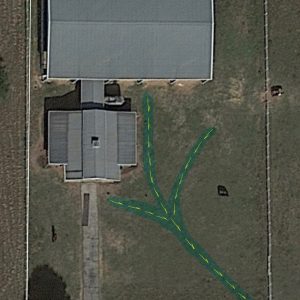
Grading
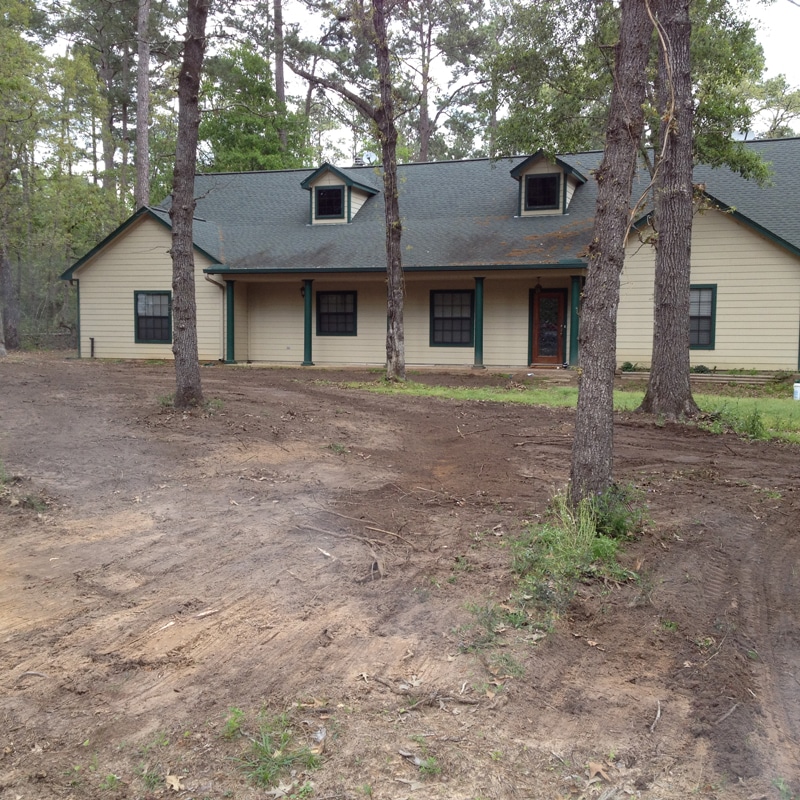
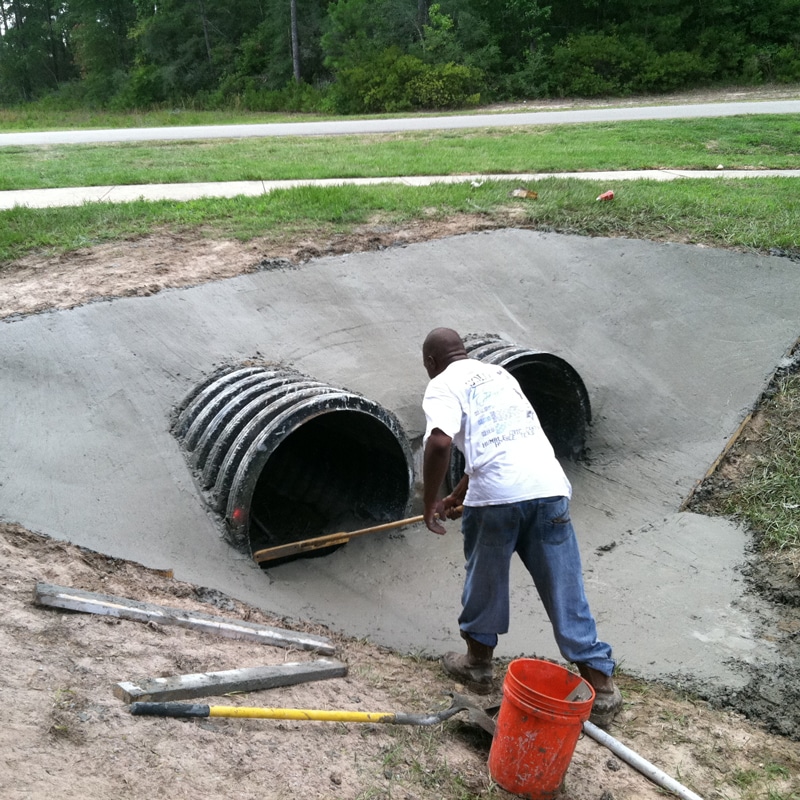
- Know what’s buried beneath your lawn. Make sure it’s free of pipes, cables or septic systems that run to your house or business. Suitable utility locating tools are recommended to detect buried services. For larger jobs, before excavation, it’s always safest to get the help of your local utility company.
- Find your slope. Professionals use a slope measuring device, such as laser range finder, precision altimeter or an inclinometer. Do-it-yourselfers use wooden stakes, string, line leveler and a tape measure.
- Mark your high and low points of your yard and bring in your topsoil. Smooth the dirt with a rake gradually from high points to lower points, always sloping away from the house.
- Compact dirt. Again, a professional has the equipment to compact dirt in layers, and avoid soft spots where erosion will start.
- Plant new grass squares or spread seeds. Rye grass properly watered daily typically sprouts within a week. Covering seeds with hay or yard clippings helps keep soil most.
Culverts
- get professional advice. Do it right, do it once.
- an 18-in corrugated metal pipe (CMP) or high-density polyethylene (HDPE) culvert offer the strongest, most economical and easiest to clean pipe
- Use at least 18 inches of clean, compacted cover over the pipe and as backfill. Poor compaction and debris-laced fill are the most commonly diagnosed failures in culvert crossings.
- In creek crossings, multiply the average depth by the average width to obtain the cross-sectional area, and divide by four to determine the rough diameter of pipe needed to pass an average storm.
- Place multiple culvers a foot or two apart so soil can be worked into a tight bond.
- Construct road section low to allow storm flow to pass over the roadway.
- Use maximum slide slopes of 2:1 to reduce erosion and promote vegetation, and road surface width at least 12 feet to calculate pipe length. .
- Use riprap or concrete rubble on the ends of culverts for scour protection.
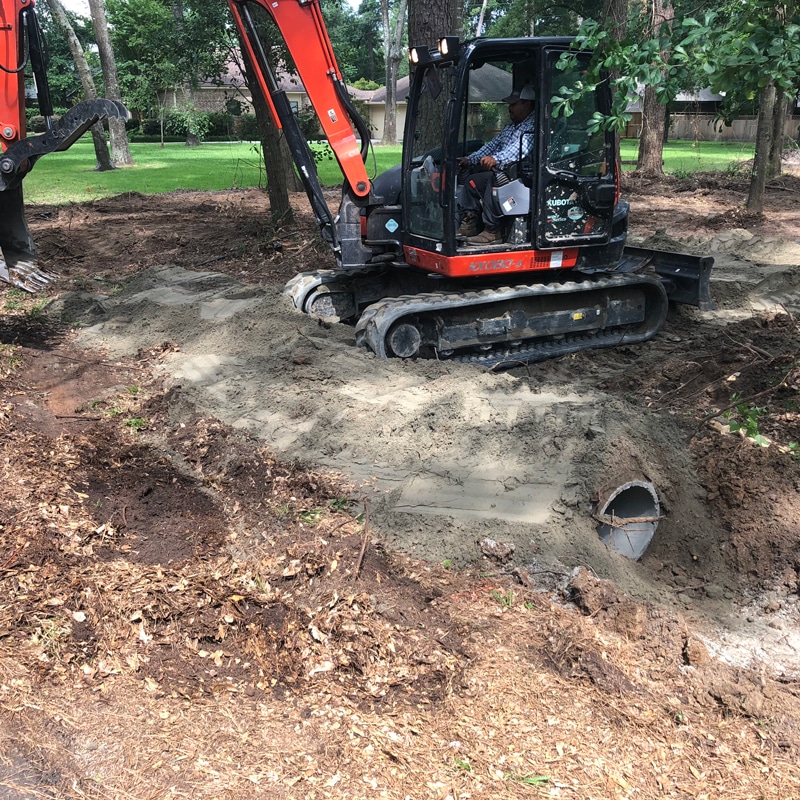

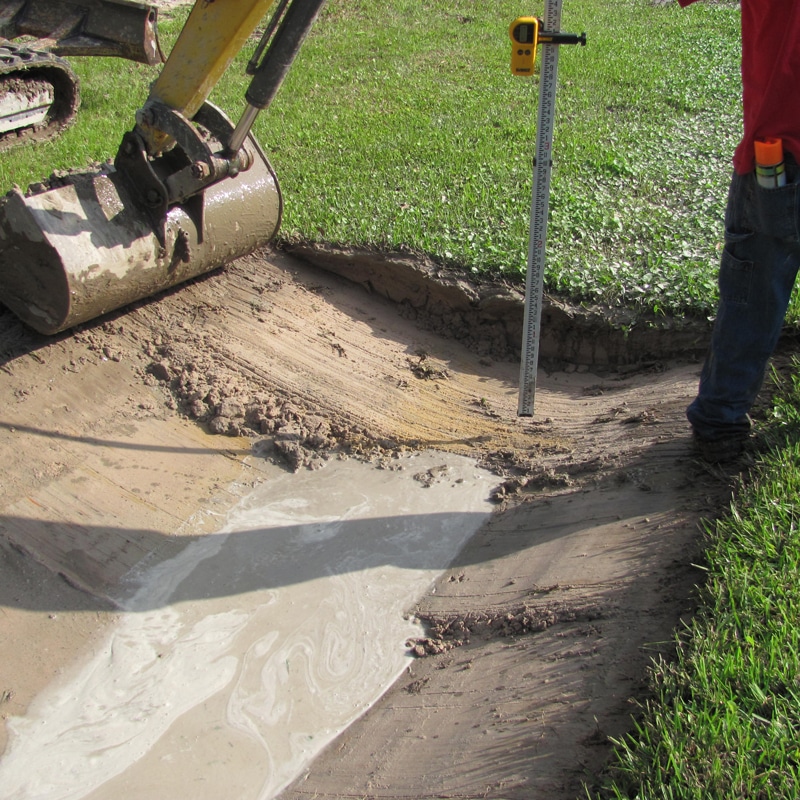
Swales

Because swales must slope downhill, they should be deeper as they get longer, sloping at least 1 inch for every 10 feet of length.
In areas of frequent heavy rainfalls, a swale may need more sophisticated engineering. For example, the bottom of the swale may be engineered with a layer of gravel and porous drain tile tubing buried beneath the surface. This allows water to be drained off more quickly. Small swales can direct gutter water to a dry well, while more substantial ones could run along the base of a hill to divert water around a low-lying house.
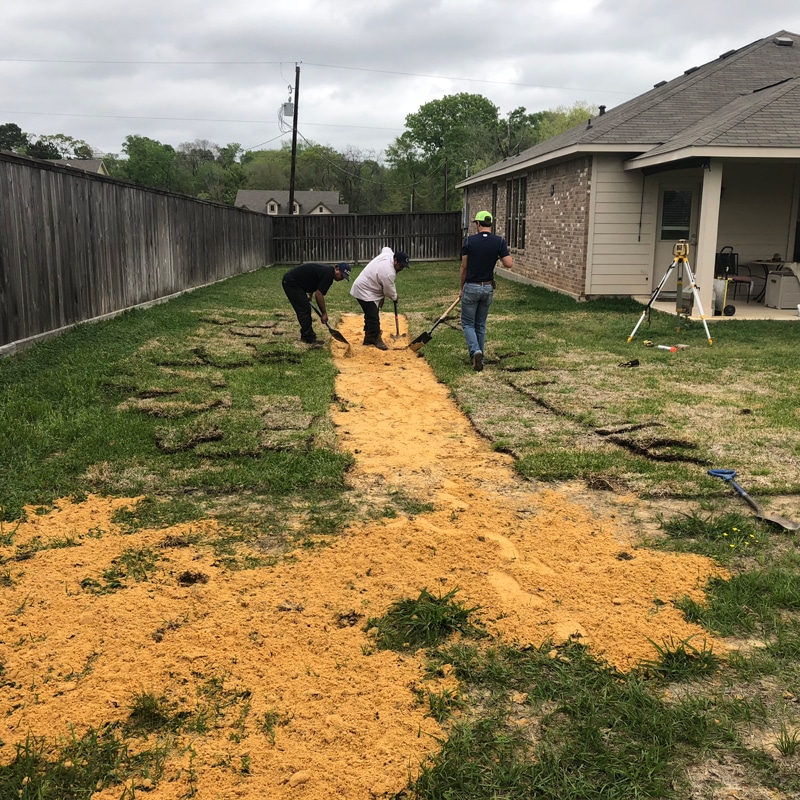
- the sides of the swale should flare so they extend out three to four times more than they are tall
- the first 8 inches of soil should drain well. If your soil drains too quickly, it can just be loosened. If water sinks in too fast, blend it with 40 percent compost.
- where drainage is very slow, replace soil with 60 percent screened sand and 40 percent compost.
- if the swale itself can’t be made big enough to evacuate all the water, consider excavating another 6 to 8 inches. Also, lining the trench with filter fabric and perforated pipe, then covering it with round ¾-inch gravel will help. Top the gravel with at least 8 inches of a compost-rich soil mix.
